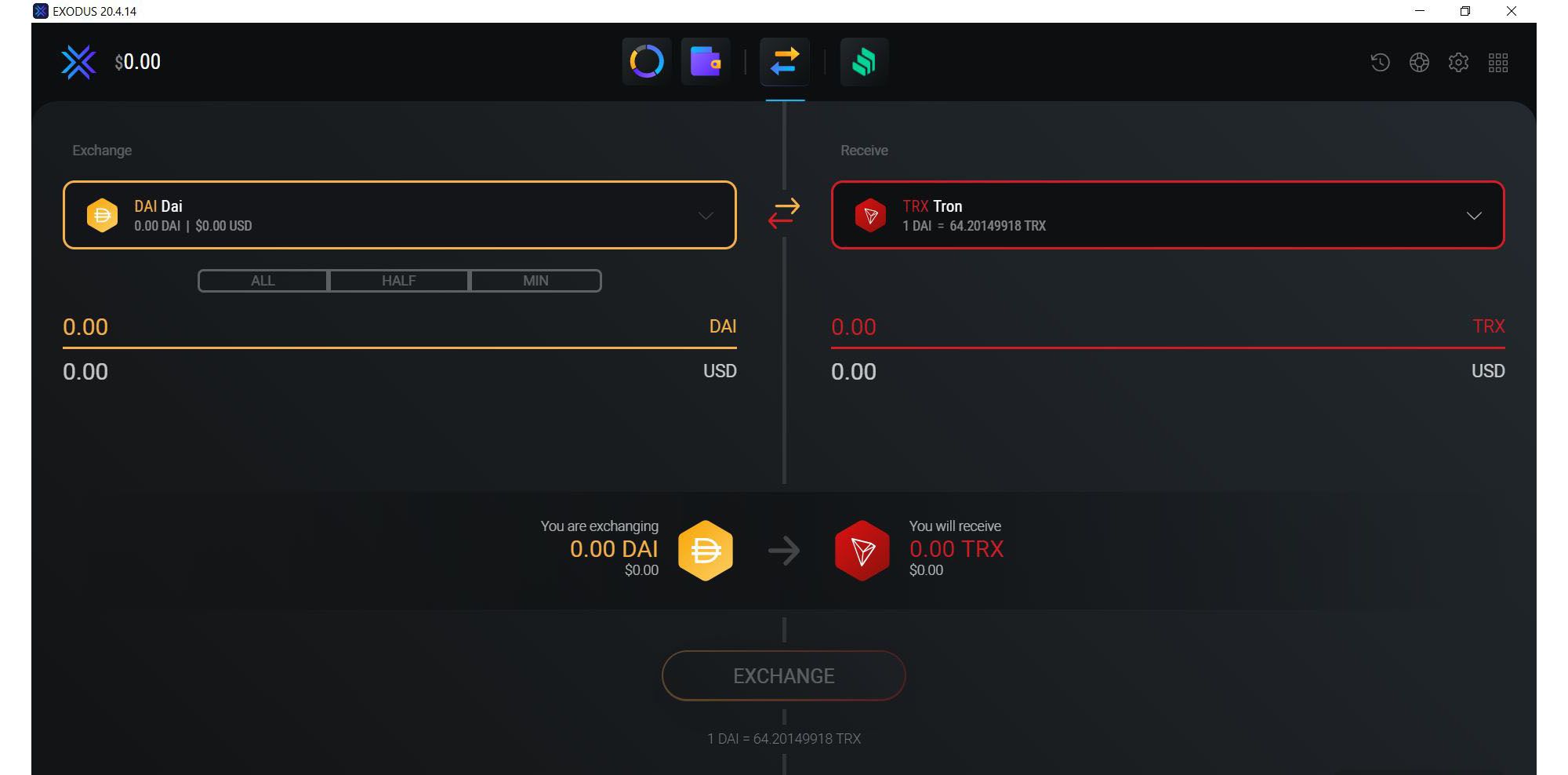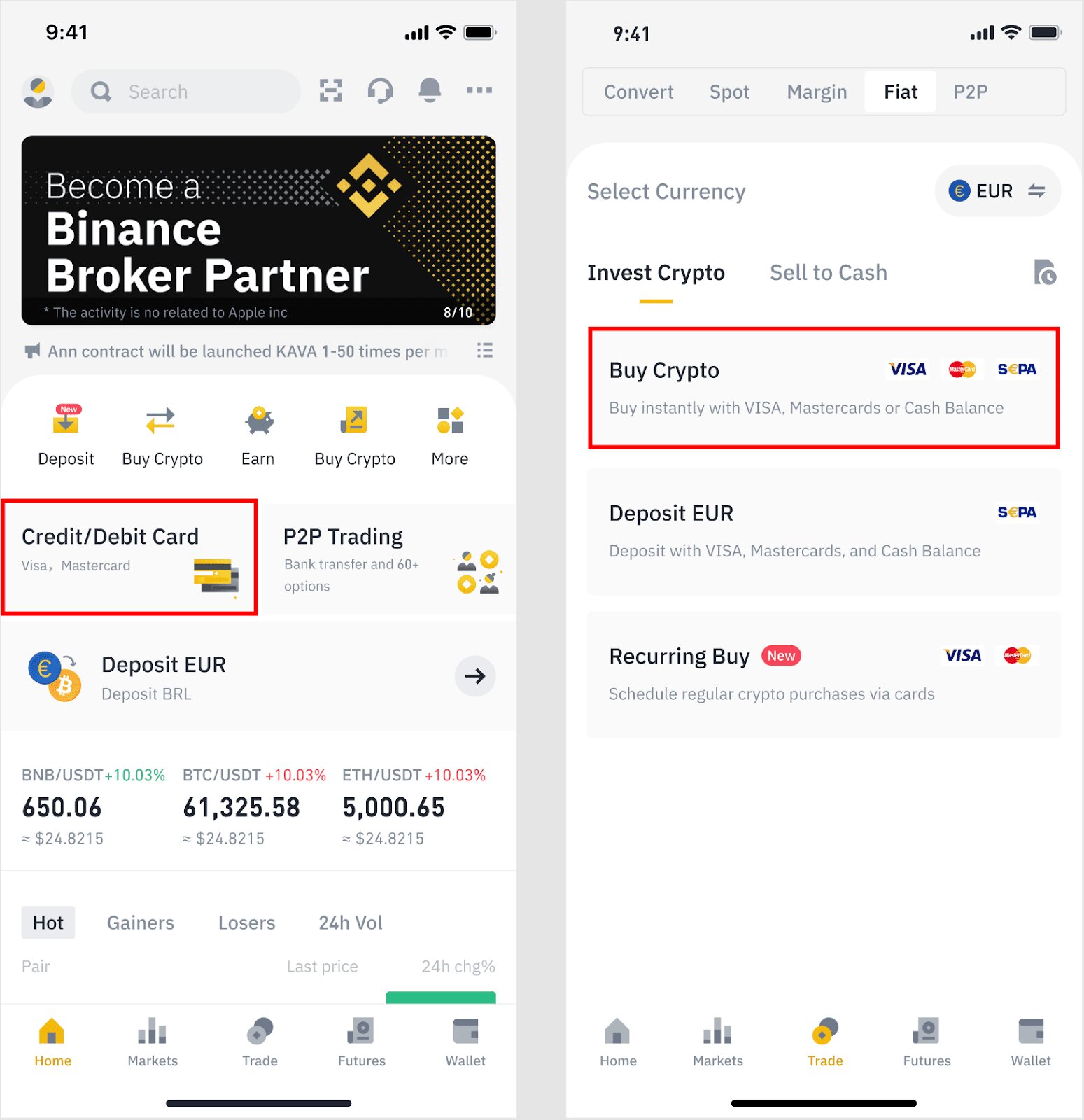Introduction
Welcome to the world of cryptocurrency, where innovation and technological advancements have revolutionized the way we transact and store value. As the popularity of digital currencies continues to soar, it is crucial to understand the various platforms and services available in this evolving landscape. One such concept is the term “CEX,” which stands for Centralized Exchanges.
CEX platforms play a fundamental role in the cryptocurrency ecosystem, serving as intermediaries that allow users to trade, buy, and sell digital assets. While there are other trading options available, such as decentralized exchanges (DEX), understanding CEX platforms is essential for individuals looking to enter the crypto space, whether as investors or active traders.
In this article, we will explore what CEX is, how it works, the pros and cons of using a CEX platform, popular CEX platforms in the market, and the factors to consider when choosing the right CEX for your needs.
What is CEX?
CEX, or Centralized Exchange, refers to a type of cryptocurrency exchange platform that operates under a central authority or entity. These platforms function as intermediaries, facilitating the trading of various cryptocurrencies between buyers and sellers. Unlike decentralized exchanges (DEX), which operate on a peer-to-peer basis, CEX platforms rely on a centralized structure, where users trade directly with the exchange.
CEX platforms offer a wide range of services, including order matching, order execution, and wallet management. Users can deposit funds into their exchange accounts and use these funds to buy or sell cryptocurrencies. The exchange acts as a custodian for the users’ assets, holding their funds until they are withdrawn or traded.
These platforms provide a user-friendly interface that makes it easy for anyone, regardless of technical expertise, to trade cryptocurrencies. They offer features like market charts, order books, and trading pairs, allowing users to analyze market trends and make informed trading decisions.
CEX platforms also play a vital role in liquidity provision. By attracting a significant number of traders, these platforms ensure that there is enough liquidity in the market, making it easier for users to execute their trades quickly and at the desired price.
Furthermore, CEX platforms often offer additional features, such as margin trading and lending/borrowing options. These advanced trading tools enable users to amplify their trading positions and potentially increase their profits. However, it’s important to note that leveraging these features also carries a higher level of risk, as it exposes traders to the possibility of larger losses.
Overall, CEX platforms serve as a gateway for individuals interested in entering the world of cryptocurrency trading. They provide a centralized environment that offers convenience, liquidity, and a wide array of features to enhance the trading experience. However, it is essential to weigh the advantages and disadvantages of using a CEX platform before diving into the crypto market.
How does CEX work?
CEX platforms operate through a system that involves several key components and processes. Understanding how CEX works is crucial to navigate these platforms effectively and make informed trading decisions. Here are the main steps involved:
1. User Registration: The first step is to create an account on the CEX platform. Users need to provide their personal information, such as name, email address, and sometimes KYC (Know Your Customer) verification, to comply with regulatory requirements.
2. Deposit Funds: Once registered, users can deposit funds into their exchange accounts. Depending on the platform, various deposit options are available, including bank transfers, credit/debit cards, or cryptocurrency transfers from external wallets.
3. Order Placement: With funds in their account, users can place buy or sell orders for the cryptocurrencies listed on the CEX platform. They specify the quantity, price, and type of order (market or limit) they want to execute.
4. Order Matching: CEX platforms employ sophisticated matching algorithms to match buy and sell orders. When a buyer’s order matches a seller’s order, a trade is executed, and the ownership of the cryptocurrencies is transferred accordingly.
5. Order Execution: Once an order is matched, the CEX platform executes the trade by deducting the buyer’s funds and crediting the seller’s account with the corresponding cryptocurrency. This process ensures the smooth and efficient execution of trades.
6. Wallet Management: CEX platforms provide wallets to store users’ cryptocurrencies. These wallets are maintained by the platform and accessible to users through their accounts. It’s important to note that while CEX wallets offer convenience, they also carry the risk of being vulnerable to hacking and theft.
7. Withdrawal: Users have the option to withdraw their funds and cryptocurrencies from the CEX platform. They can transfer their assets to external wallets for increased security or to other exchanges for trading on different platforms.
It’s worth mentioning that CEX platforms often implement security measures, such as two-factor authentication (2FA) and cold storage, to safeguard users’ funds. These platforms also adhere to legal and regulatory requirements, ensuring compliance with anti-money laundering (AML) and know-your-customer (KYC) standards.
Overall, CEX platforms function as intermediaries, providing a seamless trading experience by facilitating order matching, execution, and wallet management. Understanding the inner workings of a CEX platform is essential for users to navigate the system effectively and engage in cryptocurrency trading with confidence.
Pros of using a CEX
Centralized Exchanges (CEX) offer several advantages that make them a popular choice for individuals looking to trade or invest in cryptocurrencies. Let’s explore some of the pros of using a CEX platform:
1. User-Friendly Interface: CEX platforms provide an intuitive and easy-to-use interface, making it accessible for beginners. Users can navigate through the platform, place orders, and monitor their trades with ease, even without extensive technical knowledge.
2. Higher Liquidity: CEX platforms typically attract a large number of traders, resulting in higher liquidity compared to decentralized exchanges (DEX). This increased liquidity allows for quicker and more efficient trade execution, reducing the chances of slippage and ensuring that users can easily buy or sell their preferred cryptocurrencies at optimal prices.
3. Wide Range of Currency Options: CEX platforms usually support a wide variety of cryptocurrencies, including popular ones like Bitcoin (BTC), Ethereum (ETH), and Litecoin (LTC), as well as emerging altcoins. This enables users to explore and invest in a diverse range of digital assets, providing ample opportunities for portfolio diversification.
4. Advanced Trading Features: Many CEX platforms offer advanced trading features, such as margin trading and stop-loss orders. Margin trading allows users to borrow funds to amplify their trading positions, potentially increasing their profits. Stop-loss orders help mitigate risk by automatically executing a trade when a certain price level is reached, protecting traders from significant losses.
5. Regulatory Compliance: CEX platforms comply with relevant regulations and often implement rigorous security measures. This includes know-your-customer (KYC) procedures, two-factor authentication (2FA), and cold storage to store users’ funds safely. These security measures enhance user confidence and protect against potential threats.
6. Customer Support: CEX platforms usually offer customer support services to assist users in resolving any issues they encounter. This can range from technical glitches to account-related inquiries. Having access to reliable customer support can be beneficial, especially for novice traders who may require assistance along their crypto journey.
7. Fiat-to-Cryptocurrency Trading: Many CEX platforms allow users to deposit and withdraw funds in fiat currencies such as USD, EUR, or JPY. This feature simplifies the process of buying and selling cryptocurrencies, as users can directly convert their fiat currency into digital assets and vice versa, without the need for additional steps.
These advantages make CEX platforms a desirable option for individuals seeking convenience, a wide selection of trading options, and the ability to benefit from advanced trading features. However, it’s essential to weigh these benefits against the potential risks and drawbacks associated with using a centralized exchange.
Cons of using a CEX
While Centralized Exchanges (CEX) offer numerous benefits, it’s essential to consider the potential drawbacks and risks associated with using these platforms. Let’s delve into some of the cons of using a CEX:
1. Centralized Control: As the name suggests, CEX platforms operate under a centralized authority, which means they have control over users’ funds and the overall trading environment. This centralization raises concerns regarding data privacy and security, as users must trust the exchange to safeguard their personal and financial information.
2. Counterparty Risk: When trading on a CEX platform, users effectively give up control of their funds to the exchange. This introduces counterparty risk, as there is always a chance that the exchange could become insolvent, hacked, or engage in fraudulent activities. In such scenarios, users could lose access to their funds or face challenges in recovering them.
3. Limited Anonymity: CEX platforms often require users to undergo a KYC verification process, which involves submitting identification documents and personal information. This verification process compromises the anonymity that cryptocurrencies are designed to offer, potentially exposing users to privacy concerns.
4. Regulatory Vulnerability: Since CEX platforms operate within existing regulatory frameworks, they are subject to government regulations and oversight. While this helps ensure compliance and reduce the risk of illegal activities, it also introduces vulnerability to changes in regulations, which could impact the availability and usability of the platform.
5. Platform Downtime and Technical Issues: Like any other digital platform, CEX platforms are susceptible to technical glitches, server downtimes, and maintenance periods. These issues can disrupt trading activities, preventing users from accessing their accounts or executing trades during crucial market movements.
6. Higher Fees and Spread: CEX platforms typically charge fees for trades and transactions, which can vary depending on factors such as trading volume and order type. Additionally, CEX platforms may have wider bid-ask spreads, reducing the profitability of trades. These costs can add up, especially for frequent traders or those operating with smaller budgets.
7. Lack of Decentralization: One of the core principles of cryptocurrencies is decentralization, which aims to eliminate the need for intermediaries and give individuals full control over their assets. CEX platforms, being centralized in nature, deviate from this principle, potentially subjecting users to issues such as censorship, restricted access, and limited choices.
While CEX platforms offer convenience and a range of features, it is crucial to evaluate and understand the potential risks involved. Users should undertake thorough research, choose exchanges with strong security measures and a good reputation, and adopt best practices to protect their funds and personal information when engaging with CEX platforms.
Popular CEX platforms
With the growing popularity of cryptocurrencies, numerous Centralized Exchanges (CEX) have emerged, offering a variety of trading options and features. While there are many CEX platforms available, here are a few popular ones that have gained recognition and trust within the crypto community:
1. Binance: Binance is one of the largest and most well-known CEX platforms in the world. It offers a wide range of cryptocurrencies for trading, high liquidity, and advanced trading features like spot trading, futures trading, and staking. Binance also operates its native token, BNB, which can be used to pay for fees at a discount.
2. Coinbase: Coinbase is a reputable CEX platform that caters to both beginners and experienced traders. It provides a user-friendly interface, supports various cryptocurrencies, and offers additional features like a built-in wallet and a trading platform specifically designed for institutional investors (Coinbase Pro).
3. Kraken: Kraken is a popular CEX platform known for its robust security measures and extensive cryptocurrency options. It offers features like margin trading, futures trading, and staking. Kraken also provides advanced trading tools and charts for technical analysis, catering to more experienced traders.
4. Bitstamp: Bitstamp is one of the longest-running CEX platforms and is known for its emphasis on security and regulatory compliance. It offers a simple and intuitive interface, supports various fiat currencies, and provides features like trading, deposits, and withdrawals using fiat. Bitstamp also operates a real-time trading view for a seamless trading experience.
5. Huobi Global: Huobi Global is a CEX platform that provides a wide range of trading options, including spot trading, futures trading, and margin trading. It supports numerous cryptocurrencies and offers advanced order types, such as stop-limit orders. Huobi Global also operates its native token, HT, which offers benefits like reduced trading fees and participation in token sales.
6. OKEX: OKEX is a comprehensive CEX platform that caters to both individual traders and institutional investors. It offers a wide range of trading options, including spot trading, futures trading, and options trading. OKEX also supports various cryptocurrencies and provides advanced trading tools, charts, and analytics for traders to make informed decisions.
It’s important to note that while these platforms are popular, users should conduct their own research and due diligence before choosing a CEX platform. Factors to consider include security measures, available trading options, fees, user reviews, and regulatory compliance. Additionally, it’s crucial to ensure that the chosen platform supports the specific cryptocurrencies you wish to trade.
Remember, the popularity and reputation of CEX platforms may change over time, so staying updated with the latest industry developments and user experiences is essential for selecting a reliable and suitable CEX platform.
Factors to consider when choosing a CEX
When deciding which Centralized Exchange (CEX) to use for trading cryptocurrencies, it’s important to consider several factors to ensure the platform aligns with your specific needs. Here are some key factors to consider when choosing a CEX:
1. Security: Security should be a top priority when selecting a CEX platform. Look for exchanges that implement robust security measures, such as two-factor authentication (2FA), cold storage for funds, and regular security audits. Additionally, check if the exchange has a history of security breaches or any negative incidents related to user funds.
2. Reputation and Trust: Research the reputation and trustworthiness of the CEX platform within the crypto community. Read user reviews and feedback on various platforms and forums to gain insights into other traders’ experiences. A reputable and trusted exchange is more likely to provide a reliable and secure trading environment.
3. Supported Cryptocurrencies: Ensure that the CEX platform supports the cryptocurrencies you intend to trade. Different exchanges have varying lists of supported coins. Check if the platform offers a diverse range of cryptocurrencies and if it continuously adds new ones to stay up-to-date with market demand.
4. Trading Fees and Costs: Consider the fee structure of the CEX platform, including trading fees, deposit and withdrawal fees, and any additional charges for specific services or features. Compare the fee schedules of different exchanges to find the most cost-effective option for your trading needs.
5. User Experience and Interface: The usability and user experience of the CEX platform play a significant role, especially for novice traders. Look for platforms with intuitive interfaces, easy navigation, and helpful features such as charting tools, order books, and real-time market data. A user-friendly platform can enhance your trading experience and minimize potential errors.
6. Customer Support: Consider the level of customer support provided by the CEX platform. Look for exchanges with responsive and helpful customer support channels, such as live chat, email, or phone support. Timely and reliable customer support can be invaluable in resolving any issues or concerns that may arise during your trading journey.
7. Regulatory Compliance: Ensure that the CEX platform operates in compliance with relevant regulations and follows industry best practices. Platforms that have obtained necessary licenses and adhere to strict regulatory standards are more likely to prioritize user security and platform stability.
8. Trading Tools and Features: Evaluate the trading tools and features offered by the CEX platform. Look for features such as advanced order types, margin trading, stop-loss orders, and access to market charts and analysis. These tools can enhance your trading strategies and give you more control over your trades.
9. Exchange Liquidity: Consider the liquidity provided by the CEX platform. Higher liquidity ensures that you can easily execute trades at desired prices, reducing the risks of slippage and price manipulation. Look for exchanges with a large user base and high trading volumes to ensure sufficient liquidity.
10. Geographic Restrictions: Check if the CEX platform has any geographic restrictions or limitations. Some exchanges may not be available in certain countries or regions, so ensure that the platform is accessible in your location before signing up.
By carefully evaluating these factors, you can choose a CEX platform that aligns with your trading goals, risk tolerance, and overall preferences. Remember, each trader’s needs may vary, so take the time to find an exchange that offers the best combination of security, reputation, fees, and features for your cryptocurrency trading journey.
Conclusion
Centralized Exchanges (CEX) play a vital role in the world of cryptocurrencies, providing a user-friendly and convenient platform for individuals to trade and invest in digital assets. CEX platforms offer a range of benefits, including ease of use, higher liquidity, a wide variety of currency options, and advanced trading features. Platforms like Binance, Coinbase, Kraken, Bitstamp, Huobi Global, and OKEX have gained popularity and trust within the crypto community.
However, it’s important to consider the potential drawbacks of using a CEX, such as centralized control, counterparty risk, limited anonymity, regulatory vulnerability, and higher fees. Balancing these pros and cons is crucial when deciding which CEX platform to use.
When choosing a CEX, factors like security, reputation, supported cryptocurrencies, trading fees, user experience, customer support, regulatory compliance, trading tools, exchange liquidity, and any geographic restrictions should be carefully considered. These factors ensure that the chosen platform aligns with your specific needs, trading objectives, and risk appetite.
Remember, the cryptocurrency landscape is constantly evolving, and new CEX platforms may emerge over time. Staying informed about industry developments, conducting thorough research, and keeping up with user experiences can help you make informed decisions and select a reliable CEX platform.
Ultimately, the choice of whether to use a CEX or explore other options like decentralized exchanges (DEX) depends on your preferences and priorities. Each type of exchange offers its own advantages and considerations. Whichever path you choose, always prioritize security, practice good risk management, and stay updated with the latest trends and best practices in cryptocurrency trading.

























